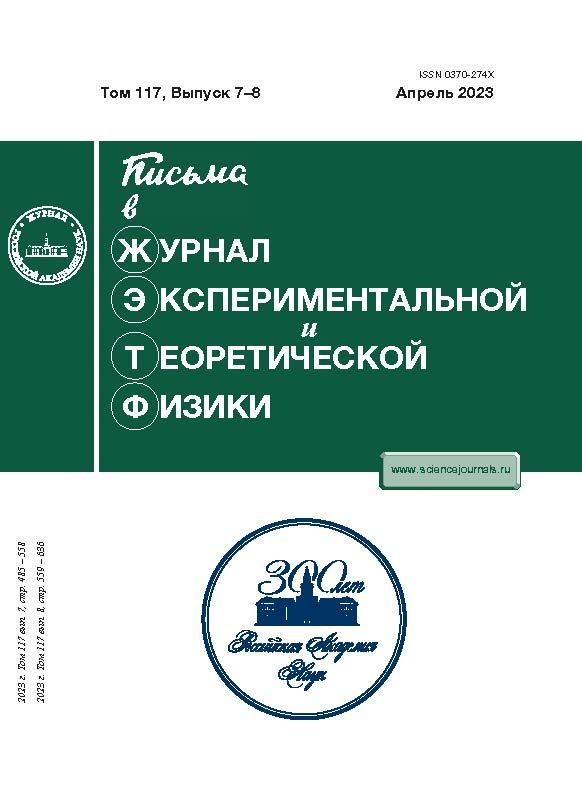Gauge equivalence between 1 + 1 rational Calogero–Moser field theory and higher rank Landau–Lifshitz equation
- Autores: Atalikov K.1,2, Zotov A.1,2,3
-
Afiliações:
- Steklov Mathematical Institute of Russian Academy of Sciences
- National Research Center “Kurchatov Institute”
- National Research University Higher School of Economics
- Edição: Volume 117, Nº 7-8 (4) (2023)
- Páginas: 632-633
- Seção: Articles
- URL: https://rjeid.com/0370-274X/article/view/664144
- DOI: https://doi.org/10.31857/S1234567823080128
- EDN: https://elibrary.ru/WJLSJW
- ID: 664144
Citar
Texto integral
Resumo
In this paper we study 1 + 1 field generalization of the rational N-body Calogero–Moser model. We show that this model is gauge equivalent to some special higher rank matrix Landau–Lifshitz equation. The latter equation is described in terms of @ rational R-matrix, which turns into the 11-vertex R-matrix in the @ case. The rational R-matrix satisfies the associative Yang–Baxter equation, which underlies construction of the Lax pair for the Zakharov–Shabat equation. The field analogue of the IRF-Vertex transformation is proposed. It allows to compute explicit change of variables between the field Calogero–Moser model and the Landau–Lifshitz equation.
Sobre autores
K. Atalikov
Steklov Mathematical Institute of Russian Academy of Sciences; National Research Center “Kurchatov Institute”
Email: letters@kapitza.ras.ru
A. Zotov
Steklov Mathematical Institute of Russian Academy of Sciences;National Research Center “Kurchatov Institute”;National Research University Higher School of Economics
Autor responsável pela correspondência
Email: letters@kapitza.ras.ru
Bibliografia
- I. Krichever, Commun. Math. Phys. 229, 229 (2002); arXiv:hep-th/0108110.
- A.A. Akhmetshin, I.M. Krichever, and Y. S. Volvovski, Funct. Anal. Appl. 36(4), 253 (2002); arXiv:hep-th/0203192.
- A. Levin, M. Olshanetsky, and A. Zotov, Commun. Math. Phys. 236, 93 (2003); arXiv:nlin/0110045.
- K. Atalikov and A. Zotov, J. Geom. Phys. 164, 104161 (2021) 104161; arXiv:2010.14297 [hep-th].
- A. Levin, M. Olshanetsky, and A. Zotov, Nucl. Phys. B 887, 400 (2014); arXiv:1406.2995 [math-ph].
- K. Atalikov and A. Zotov, JETP Lett. 115, 757 (2022); arXiv:2204.12576 [math-ph].
- S. Fomin and A.N. Kirillov, Advances in geometry, Progress in Mathematics book series, Springer, N.Y. (1999), v. 172, p. 147.
- A. Polishchuk, Adv. Math. 168(1), 56 (2002); arXiv:math/0008156 [math.AG].
- A. Levin, M. Olshanetsky, and A. Zotov, JHEP 07, 012 (2014); arXiv:1405.7523 [hep-th].
- I.V. Cherednik, Theor. Math. Phys. 43(1), 356 (1980).
- K. Atalikov and A. Zotov, arXiv:2303.02391 [math-ph].
- G. Aminov, S. Arthamonov, A. Smirnov, and A. Zotov, J. Phys. A: Math. Theor. 47, 305207 (2014); arXiv:1402.3189. [hep-th].
Arquivos suplementares










